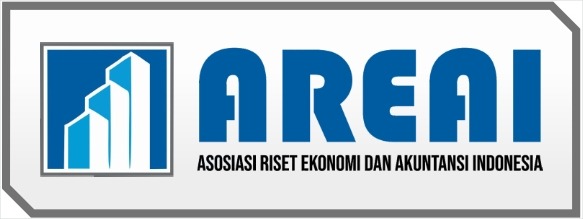The Effect of Debt To Asset Ratio, Debt To Equity Ratio To Nett Profit Margin (Case Study of PT Waskita Karya (Persero) Tbk In 2018-2022)
DOI:
https://doi.org/10.61194/ijat.v1i2.59Keywords:
Debt to Asset Ratio, Debt to Equity Ratio, Nett Profit MarginAbstract
The purpose of this study is to see and determine the effect between debt asset ratio and debt equity ratio on net profit margin both partially and simultaneously. This research is a quantitative research with secondary data obtained from the Indonesia Stock Exchange, in the period 2018-2022. Sample selection, the method used is purposive sampling, Data collection techniques used in this study are secondary data, data analysis techniques using the SPSS Version 24 statistical program. The test results are partially obtained, namely: The variable Debt to Asset Ratio (X1) does not have a partially significant effect on Net profit Margin (Y) because the significance level value is greater than 0.005. The variable Debt to Equity Ratio (X2) has a significant effect partially because the significant value is smaller than 0.005, the test results simultaneously obtained the result of the significance value of 0.034 which is smaller than 0.005, it can be concluded that both variables Debt to Asset Ratio (X1) and Variable Debt to Equity Ratio (X2) have a positive and significant influence on the dependent variable, namely Nett profit Margin (Y)
References
Ardhefani, H., &; Pakpahan, R. (2021). The effect of CR and DER on ROA in Cosmetics and Household Goods Companies. 1(2), 341–351
Agustin, D., Irmawati, A. ., &; Kartini, E. . (2023). ANALYSIS OF DEBT TO EQUITY RATIO (DER), DEBT TO ASSET RATIO (DAR), EARNINGS PER SHARE (EPS), AND RETURN ON EQUITY (ROE) ON STOCK PRICE FLUCTUATIONS REVIEWED FROM THE CONSOLIDATED FINANCIAL STATEMENTS. Humantech : Indonesian Multidisciplinary Scientific Journal, 2(6), 1109–1114.
Sopiah, S. P. (2023). The effect of Debt to Asset Ratio (DAR) and Debt to Equity Ratio (DER) on Return On Equity (ROE) in Transportation Sub-Sector Companies listed on the Indonesia Stock Exchange for the 2017-2021 Period (Doctoral dissertation, UIN Sunan Gunung Djati Bandung).
Indrawan, A. (2018). The effect of debt to equity ratio on return on assets (ROA) in pharmaceutical sub-sector companies listed on the Indonesia Stock Exchange. 3(12), 5–16
Komara, H. A. (2014). Analysis of the Effect of Capital Structure on Corporate Financial Performance. Journal of Finance and Banking , 20 (1), 10-21
Maulita, D., &; Tania, I. (2018). The effect of Debt to Equity Ratio (DER), Debt to Asset Ratio (DAR), and Long Term Debt to Equity Ratio (LTDER) on profitability (Study on Food and Beverage Sub-Sector Manufacturing Companies Listed on IDX for the 2011-2016 Period. 5(2), 132–137
Miftahul Jannah. (2023). THE EFFECT OF DEBT TO ASSET RATIO (DAR) AND DEBT TO EQUITY RATIO (DER) ON RETURN ON ASSET (ROA) IN MINING COMPANIES LISTED ON THE INDONESIAN SHARIA STOCK INDEX FOR THE 2017-2021 PERIOD. EKSYA : Journal of Sharia Economics, 4(1), 92-115.
Nurulrahmatiah, N., &; Huda, N. (2023). THE EFFECT OF DEBT TO ASSET RATIO (DAR) AND DEBT TO EQUITY RATIO (DER) ON RETRUN ON ASSET (ROA) IN CEMENT SUB-SECTOR COMPANIES LISTED ON THE IDX. JEBIMAN: Journal of Economics, Business, Management and Accounting, 1(5), 599-607.
Priyanto, S., &; Darmawan, A. (2017). The effect of Debt to Asset Ratio (Dar), Debt to Equity Ratio (DER), Long Term Debt to Asset Ratio (Ldar) and Long Term Debt to Equity Ratio (Lder) on Profitability (Roe) in manufacturing companies on the Indonesia Stock Exchange for the period 2012-2014. Media Economics, 17(1), 25-32.
Rivaldy, Muhammad Fikry, &; Pratiwi, L. N. (2022). The Effect of Current Ratio and Inventory Turnover on Return on Assets in Cement Sub-Sector Companies. 2(2), 355–367.
Suryandani, A. (2018). The Effect of Company Growth, Company Size, and Investment Decisions on Company Value in Property and Real Estate Sector Companies on the IDX. BMAJ: Business Management Analysis Journal, 1(1), 49 –59.
Sopiah, S. P. (2023). The effect of Debt to Asset Ratio (DAR) and Debt to Equity Ratio (DER) on Return On Equity (ROE) in Transportation Sub-Sector Companies listed on the Indonesia Stock Exchange for the 2017-2021 Period (Doctoral dissertation, UIN Sunan Gunung Djati Bandung).
Supardi, H. (2023). THE EFFECT OF DEBT TO ASSET RATIO, DEBT TO EQUITY RATIO ON RETURN ON ASSETS. Investment Journal, 9(1), 54-59.
Willy, S. (2017). Analysis of Financial Ratios to Measure the Company's Performance in the Sectors of Consumer Goods at PT. Nippon Indosari Corpindo, Tbk and PT. Mayora Indah, Tbk. International Journal of Business and Economic Affairs (IJBEA). 2(1). 45-51
Apriliany, R. D. R., Effendi, M. S., & Apriliany, R. D. R. (2019). PENGARUH INFLASI, SUKU BUNGA, RETURN ON ASSET (ROA) DAN DEBT TO EQUITY RATIO (DER) TERHADAP RETURN SAHAM. IKRAITH-EKONOMIKA, 2(2), 52–60. https://journals.upi-yai.ac.id/index.php/IKRAITH-EKONOMIKA/article/view/404
Asyik, N. F., Wahidahwati, & Laily, N. (2022). The Role of Intellectual Capital in Intervening Financial Behavior and Financial Literacy on Financial Inclusion. WSEAS Transactions on Business and Economics, 19, 805–814. https://doi.org/10.37394/23207.2022.19.70
Harun, H., Graham, P., Kamase, H. P., & Mir, M. (2021). A Critical Analysis of the Impacts of Financial Literacy and NPM on Village Funds Initiative in Indonesia. International Journal of Public Administration, 44(4), 336–345. https://doi.org/10.1080/01900692.2020.1722165
Harun, H., Mir, M., Carter, D., & An, Y. (2019). Examining the unintended outcomes of NPM reforms in Indonesia. Public Money and Management, 39(2), 86–94. https://doi.org/10.1080/09540962.2019.1580892
Perusahaan, T. N., Adelyya, R., & Putri, N. E. (2023). Pengaruh Debt To Equity Ratio, Sales Growth Dan Tax Avoidance Terhadap Nilai Perusahaan. IKRAITH-EKONOMIKA, 6(2), 123–132. https://doi.org/10.37817/IKRAITH-EKONOMIKA.V6I2.2343
Seraj, A. H. A., Fazal, S. A., & Alshebami, A. S. (2022). Entrepreneurial Competency, Financial Literacy, and Sustainable Performance—Examining the Mediating Role of Entrepreneurial Resilience among Saudi Entrepreneurs. Sustainability (Switzerland), 14(17). https://doi.org/10.3390/su141710689
Sharma, A., & Johri, A. (2014). Learning and empowerment: Designing a financial literacy tool to teach long-term investing to illiterate women in rural India. Learning, Culture and Social Interaction, 3(1), 21–33. https://doi.org/10.1016/j.lcsi.2013.10.003
Stylianou, A. M., Counselman-Carpenter, E., & Redcay, A. (2019). Developing a financial literacy program with survivors of intimate partner violence: The voices of survivors. Social Work (United States), 64(4), 311–320. https://doi.org/10.1093/sw/swz034
Zafra‐Gómez, J. L., López‐Hernández, A. M., Plata Díaz, A. M., & López, G. P. (2014). The duration of financial stress: A factor impacting on the implementation of NPM‐delivery forms in local government. Academia Revista Latinoamericana de Administracion, 27(3), 366–385. https://doi.org/10.1108/ARLA-04-2013-0035
Downloads
Published
How to Cite
Issue
Section
License
Copyright (c) 2023 Muhammad Distian Andi Hermawan

This work is licensed under a Creative Commons Attribution 4.0 International License.






